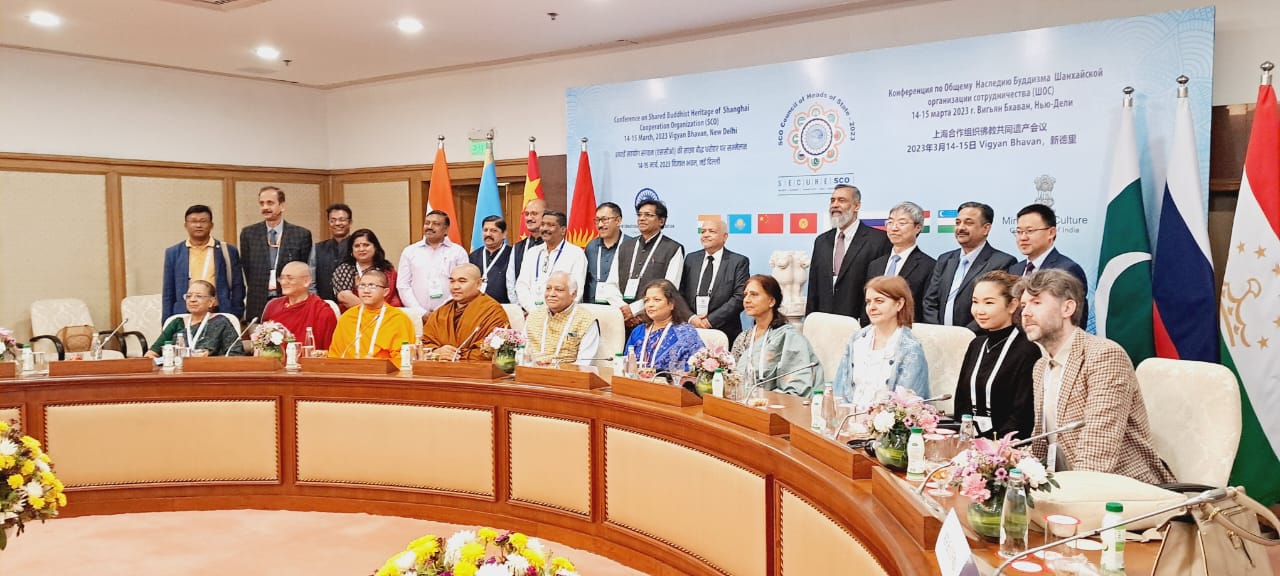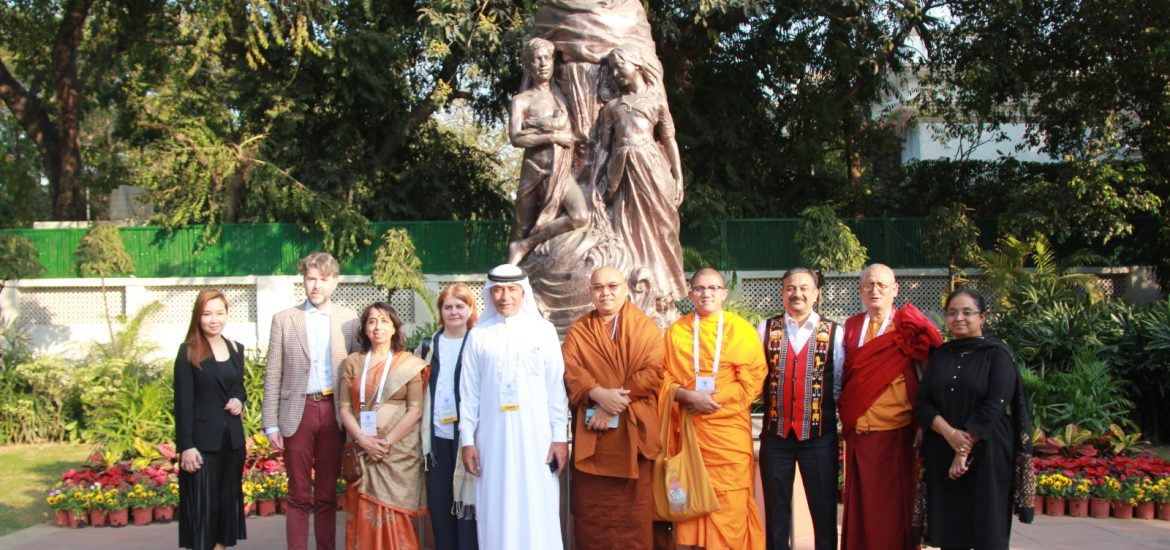By Dr. Chandan Kumar
From 14–15 March, India hosted a two-day international conference under its leadership of the Shanghai Cooperation Organization (SCO) called “Shared Buddhist Heritage” in New Delhi. The year 2023 marks a special and historic year for India, as India is holding the G20 and SCO presidencies at the same time. It was inaugurated by Shri G.K Reddy (Union Minister for Culture, Tourism and Development of North Eastern Region), Smt. Meenakashi Lekhi (Minister of State for Culture and External Affairs), and Shri Arjun Ram Meghwal (Minister of State for Culture and Parliamentary Affairs). The delegates present came from Russia, China, Pakistan, Tajikistan, Belarus, Bahrain, Myanmar, United Arab Emirates and Kazakhstan. Leading Indian experts also participated in the meet.
This international symposium was organized by the Ministry of Culture, the Ministry of External Affairs and the International Buddhist Confederation. It is the first official conference to have brought together SCO countries under the thematic umbrella of the Three Treasures.
Dr. Nonna Alfonso, curator of the Central Asian Art collection at the State Museum of Oriental Art, Moscow, represented the Buryatia region of Russia. She said that the museum has a significant collection of Buddhist objects: thangka icons, miniature paintings, sculptural and relief images, altar decorations, ritual attributes and ritual weapons, amulets, and caskets. The same objects were still found in modern Buddhist temples in Buryatia. She highlighted how, for example, the terracotta artifacts shared a distinct connection to India: “The Buryatian terracotta clay items of the 16th century are very similar to the icons found in Madhya Pradesh.”

Dr. A. Imran Shauket, advisor to the Pakistan Tourism Coordination Board and a promoter of Pakistani Buddhist heritage, said that the Swat Valley was a treasure house for Buddhist archeologists. It is believed there were 1,000 monasteries in this region at its Buddhist zenith. He also referred to various legends mentioning Guru Padmasambhava’s legacy in this area, connecting Pakistan intimately to the Vajrayana tradition.
The Peshawar Museum houses several scripts in both the Sharda and Pali languages, which should be attractive to Indian scholars. He said that “the doors were open to Indian scholars to study these and decode them, as well as visit Buddhist sites in Pakistan.” He also offered to organize exhibitions on Gandhara and Swat, with excavated findings to be shared with SCO countries.
Speaking on the Dunhuang Mogao Grottoes, Dr. Shengliang Zhao, formerly director of the Dunhuang Research Academy, highlighted the influence of the Indian caitya on the Thousand Buddha Caves and the artwork in the broader region. Providing examples through numerous slides, he said the central pillar in Mogao’s Cave 482 was influenced by Ajanta’s Cave Number 10. Ven. Bhaddanta Dr. Candamukha of Myanmar, steering the discussion to contemporary times, pointed out that it was through Buddhism that connected the whole of Asia, and now Asia with the West. Prof. Anupa Pande, pro Vice-Chancellor of the National Museum Institute of History of Art, Conservation and Museology (NMI), summed up the sentiments expressed by all participants by declaring: “Buddhism is like a banyan tree; its roots were planted firmly in India while the branches spread to Central Asia, China, the Far East, and the Indian sub-continent.”
Summarizing the two-day deliberations, the keynote speaker Prof. K. Warikoo, founder of the Central Asian Studies Programme at Jawaharlal Nehru University, noted that the participants were united in their observation that Buddha’s teachings were universal and non-sectarian. The Buddha had shown humanity the Middle Way, and it remained relevant and critical in these turbulent times of geopolitics, the environment, and society. The Three Treasures needed to be preserved in the right spirit.
Participants also highlighted an urgent need to preserve and popularize the living Buddhist legacy among the younger generation. Deliberated steps in this direction were ideas like introducing audio visual documentaries, books and chapters for schools, and college course books.
Dr. Chandan Kumar is a research scholar from Jawaharlala Nehru University, New Delhi
See more
First of its kind SCO International Conference on “Shared Buddhist Heritage” inaugurated today (Ministry of Culture, India)


